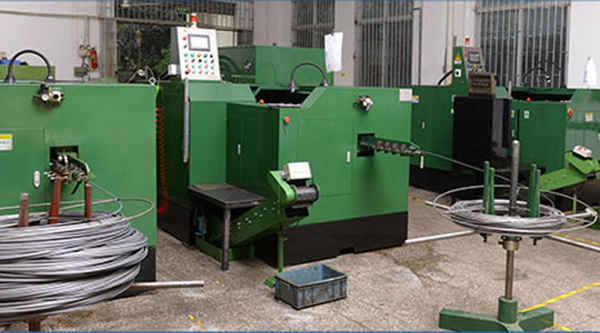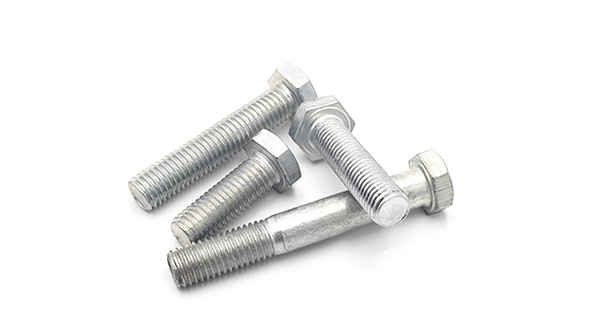What is the tolerance range of precision screws?
What is the tolerance range of precision screws?
Service Hotline
+86760-8787 8587We have more than ten years of experience in the production of screw industry, the main products are: square aluminum profile accessories, dome nuts, screw rivets, cross recessed screws, GB3788U screws, buttonhole flat bottom isolation column rivets, knock-on-lock rivet knock-on iron Flat head rivets, counter-tapping nuts, set extension bolts and screws, Cantonese nuts, fasteners 12.9 grade screws, Washers acid-resistant, yin and yang columns, boxed matching hard disk chassis nut gaskets, dish washers and other fasteners, due to the product material Different specifications and different prices, please contact us if necessary.


The national standard name of the cross recessed small pan head three-combination screw is the cross recessed small pan head screw, the spring washer and the flat washer assembly. The national label is GB/T9074.8-1988. This 1988 refers to the year, that is, this standard is the standard issued by the country in 1988. The specifications of the cross recessed small pan head three-combination screw, our company's minimum is M2.5, the shortest is 5mm, the largest is M10, and the longest is 90mm. Of course, as customers have higher and higher requirements for small pan head combination screws, or require smaller and longer combination screws. If the quantity is large, or with the development of our company. Buy some advanced combination screw machines. Come and go to meet the higher requirements of our customers.

Combination bolts refer to a bolt with a spring washer and a flat washer, which are combined by rubbing teeth. Before the combination bolt is used, the bolt, the spring washer and the flat washer are generally combined by a specific machine. The combined production line mainly includes the processes of feeding, discharging, feeding, charging, screwing and tightening. The existing combined bolt production equipment mainly transmits the bolts to each process through the conveyor belt, and finally completes the combined assembly. The machines in each process are scattered and the space is occupied. The vibrating plate feeding generally puts the bolt head up, and its bolts, spring washers, etc. After the flat pad is assembled, the fixation is poor, and it is easy to fall off during the assembly process.


Bolt: A type of fastener consisting of a head and a screw (a cylinder with an external thread), which needs to be matched with a nut to fasten and connect two parts with through holes. This form of connection is called a bolted connection. If the nut is unscrewed from the bolt, the two parts can be separated, so the bolt connection is a detachable connection. [1] Stud: A type of fastener that has no head and only has external threads on both ends. When connecting, one end of it must be screwed into the part with the internal threaded hole, the other end must pass through the part with the through hole, and then the nut must be screwed on, even if the two parts are tightly connected as a whole. This form of connection is called a stud connection, which is also a detachable connection. It is mainly used for occasions where one of the connected parts is thick, requires a compact structure, or is not suitable for bolt connection due to frequent disassembly. [1] Screw: It is also a type of fastener consisting of a head and a screw. It can be divided into three categories according to the purpose: machine screws, set screws and special-purpose screws. Machine screws are mainly used for a fastened connection between a part with a fixed threaded hole and a part with a through hole, without the need for nut matching (this connection form is called screw connection, which is also a detachable connection; it can also be Cooperate with the nut, it is used for the fast connection between two parts with through holes.) The set screw is mainly used to fix the relative position between the two parts. Special purpose screws, such as eyebolts, are used for hoisting parts. [1] Nuts: with internal threaded holes, generally in the shape of a flat hexagonal column, but also in a flat square column or flat cylindrical shape, with bolts, studs or machine screws, used to fasten and connect two parts, make it a whole. [1] 5. Self-tapping screw: Similar to machine screw, but the thread on the screw is a special thread for self-tapping screw. It is used to fasten and connect two thin metal components to make them a whole. Small holes need to be made in advance on the components. Due to the high hardness of this kind of screw, it can be directly screwed into the hole of the component, so that the Forming a corresponding internal thread [1] 6. Wood screw: It is also similar to a machine screw, but the thread on the screw is a special thread for wood screws, which can be directly screwed into wooden components (or parts) to connect a band through The metal (or non-metallic) part of the hole is fastened to a wooden member. This connection is also a detachable connection. [1] 7. Washers: A type of fastener with an oblate annular shape. It is placed between the supporting surface of the bolt, screw or nut and the surface of the connecting part, which increases the contact surface area of the connected parts, reduces the pressure per unit area and protects the surface of the connected parts from damage; another type of elastic washer, It can also play a role in preventing the nut from loosening. [1] 8. Retaining ring: It is installed in the shaft groove or shaft hole groove of the machine and equipment, and plays the role of preventing the parts on the shaft or the hole from moving left and right. [1] 9. Pins: mainly used for positioning the left and right parts, and some are also used for connecting parts, fixing parts, transmitting power or locking fasteners. [1] 10. Rivet: A type of fastener consisting of a head and a shank, which is used to fasten and connect two parts (or components) with holes to make them a whole. This form of connection is called rivet connection, or riveting for short. It is a non-removable link. Because if the two parts joined together are separated, the rivets on the parts must be broken. [1] 11. Components and connection pairs: Assemblies are a type of fasteners supplied in combination, such as a combination of a certain machine screw (or bolt, self-supplied screw) and a flat washer (or spring washer, lock washer); Connection pair refers to a type of fastener that is supplied by a combination of special bolts, nuts and washers, such as high-strength hexagon head bolt connection pairs for steel structures. [1] 12. Welding nail: a heterogeneous fastener composed of a nail rod and a nail head (or no nail head), which is fixed to a part (or component) by welding, so as to be connected with other parts. .

The above riveting requires special tools and equipment, which cannot be used in actual specific occasions. In the case of no electricity and no air, only manual tools can be used; and manual tools cannot be used for large types of rivets due to limited human strength. Moreover, after the rivet is disassembled, the rivet itself will be destroyed and cannot be reused.

The above content is uploaded by Yueluo or the Internet. If there is any copyright issue, please contact [email protected].

What is the tolerance range of precision screws?

How to choose the right stainless steel screw manufacturer?

Why is there an R angle under the head of the hexagon head s...

We have more than ten years of production experience in the ...

We have more than ten years of production experience in the ...

We have more than ten years of experience in screw industry ...

We have more than ten years of experience in screw industry ...